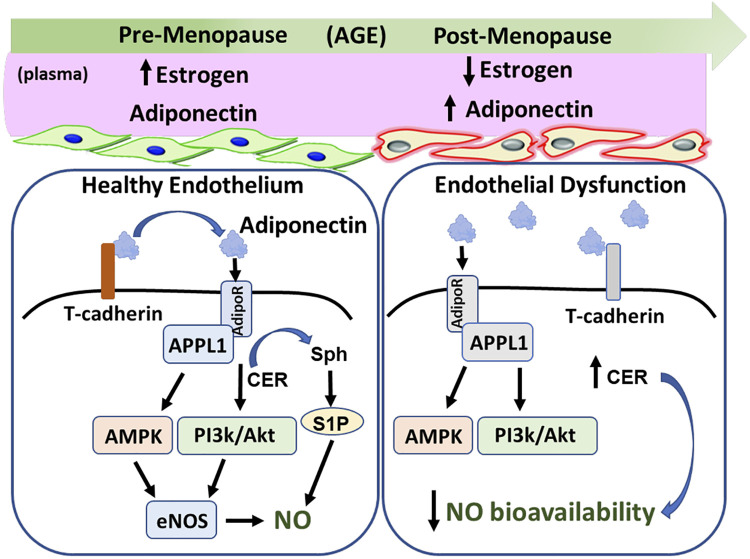Figure 2.
The estrogen-adiponectin paradox in aging females. Plasma estrogen levels decline while adiponectin levels increase during the transition to menopause. T-cadherin is critical for the binding of adiponectin to adiponectin receptor (AdipoR) 1/2. Once receptors are activated, the adapter protein AAPL1 is required to activate various downstream pathways, including AMPK and PI3K/Akt, which results in an increase in endothelial nitric oxide (NO) synthase (eNOS)-generated NO. Activation of AdipoR1/2 dramatically increases hydrolysis of ceramide (Cer), a sphingolipid that induces endothelial dysfunction. The NO-generating pathways combined with shifting the sphingolipid rheostat toward sphingosine (Sph)-1-phosphate (S1P) promotes a healthy endothelium. Despite the rise in adiponectin during menopause, women have an elevated risk of cardiovascular disease, which may be due to dysfunctional T-cadherin, AdipoR1/2, and/or APPL1 signaling (gray). Both the loss of NO-stimulating pathways and decrease in AdipoR1/2 ceramidase activity contributes to decreased NO bioavailability and endothelial dysfunction.

